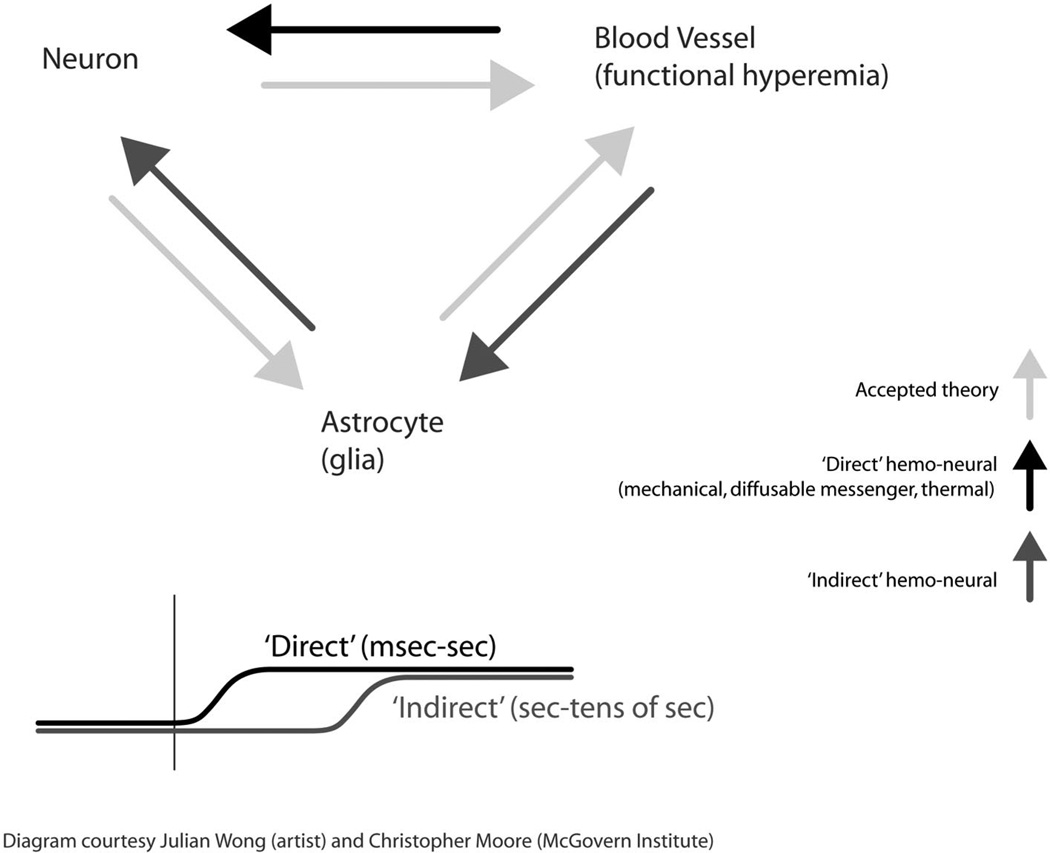FIG 1.
The hemo-neural hypothesis: bidirectional interactions between hemodynamics, neurons, and glia. This figure shows the key concepts underlying the hemo-neural hypothesis. Neural activity is known to drive functional hyperemia and may do so through either neural inputs to the vasculature or through intermediary astrocytes (lighter gray arrows). The hemo-neural hypothesis proposes that hemodynamic changes can impact neural activity through direct and indirect pathways. Direct effects (black arrow) are hypothesized to occur through the release of diffusible messengers, mechanical interactions, and/or changes in temperature. Indirect effects (darker gray arrows) are hypothesized to occur through activation of astrocytes, which in turn modulate neural activity. As shown in the diagram on the bottom of the figure, direct interactions are predicted to occur within milliseconds to seconds following changes in the local hemodynamic environment and indirect interactions to occur on a time scale of seconds.

